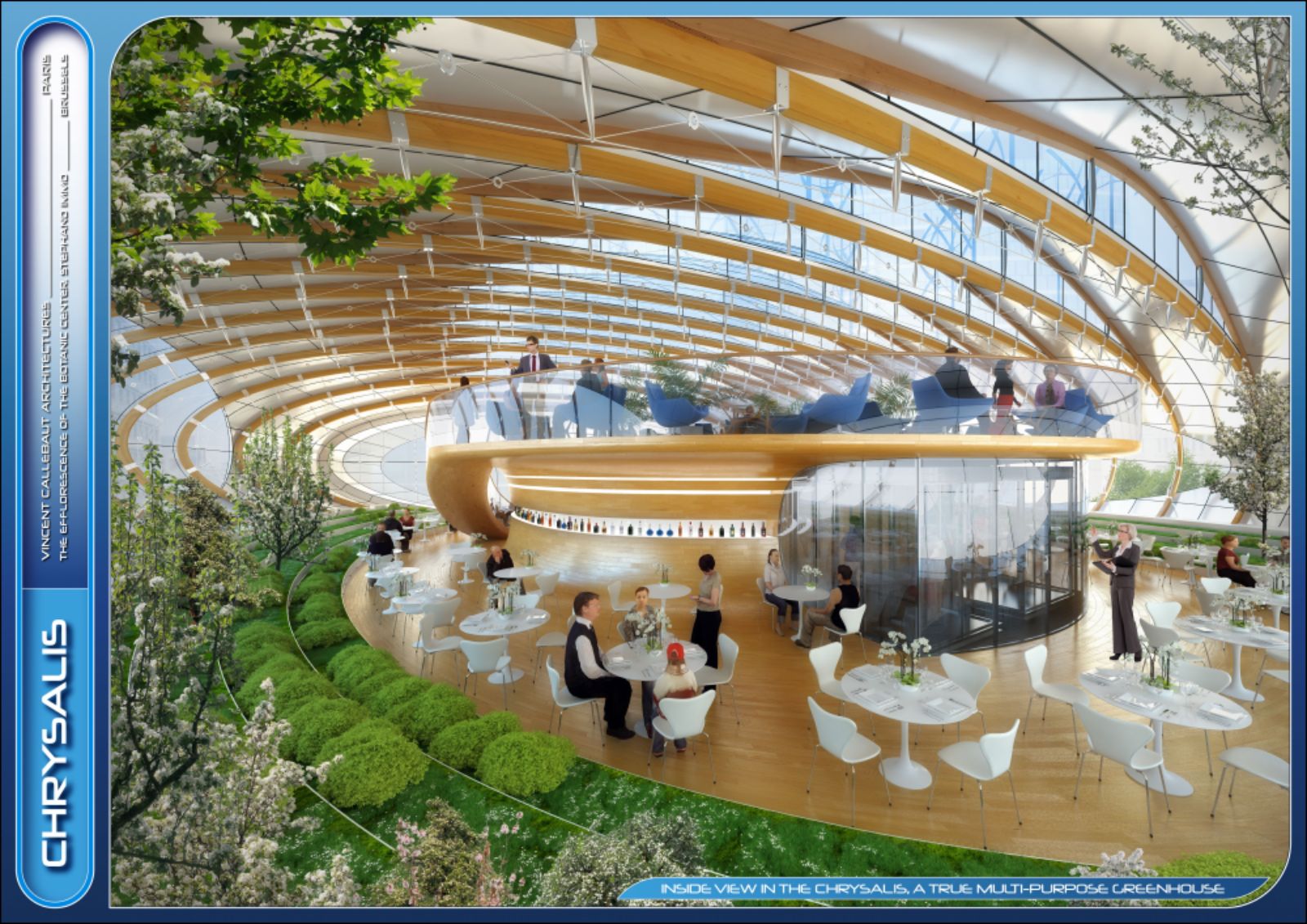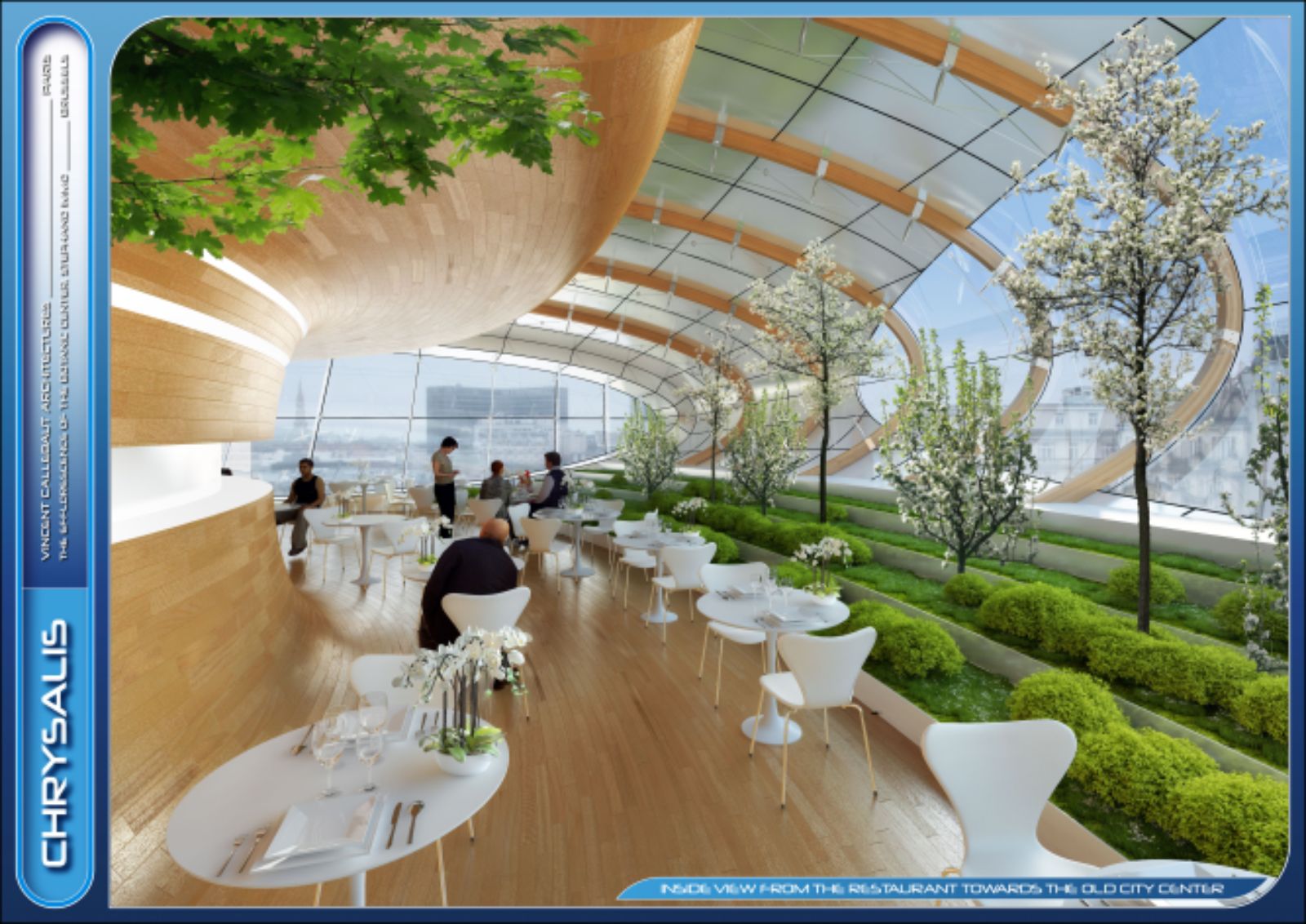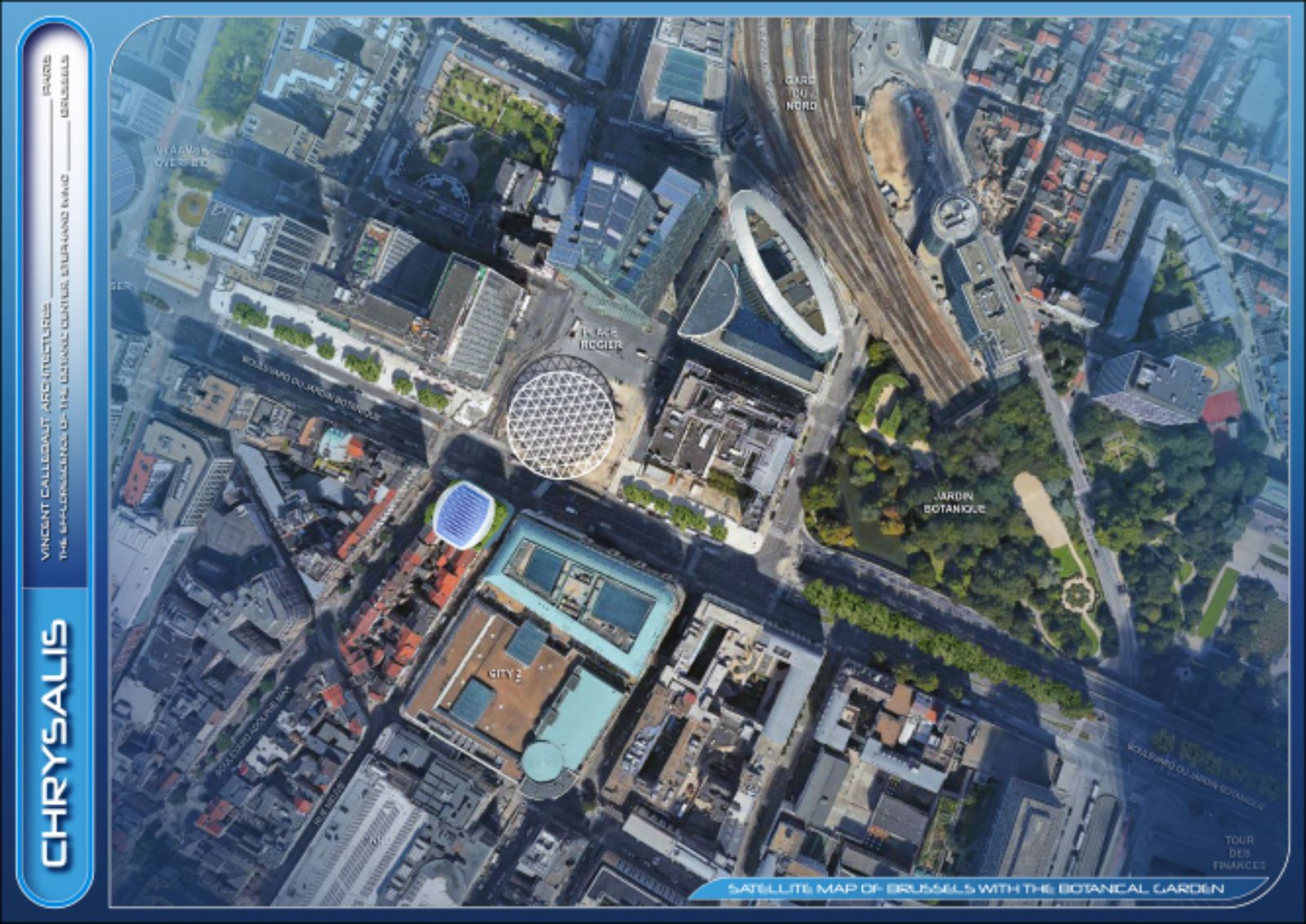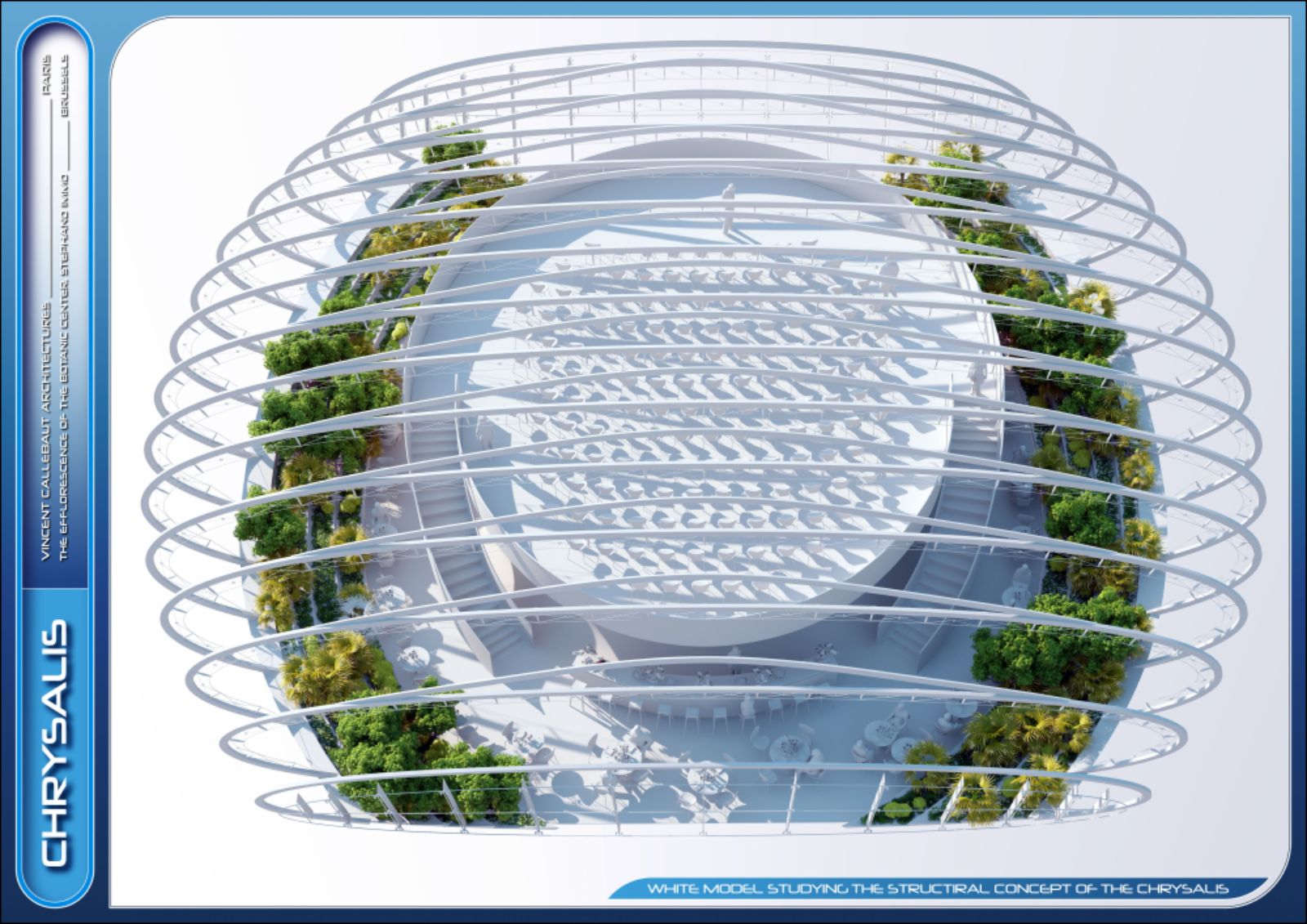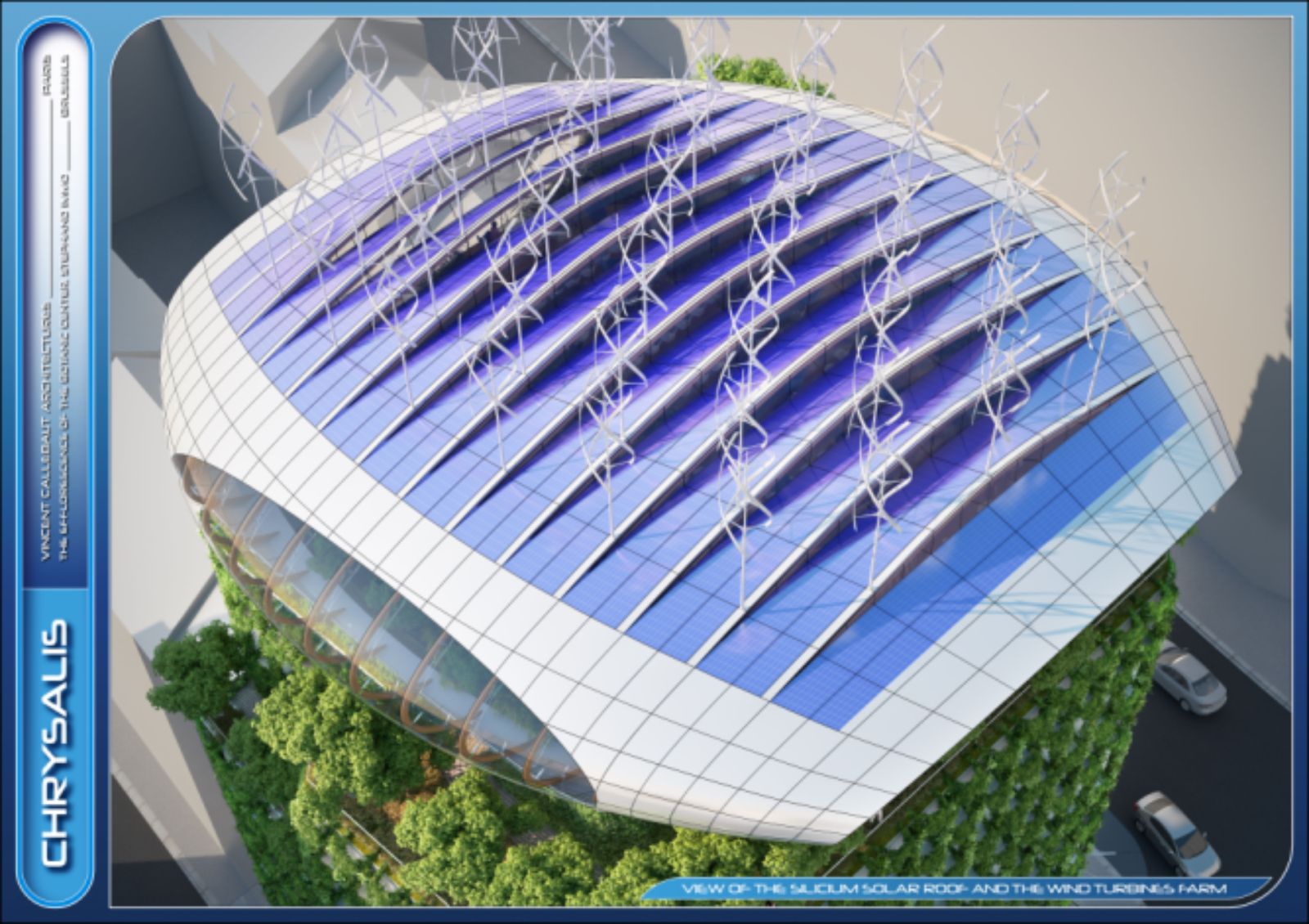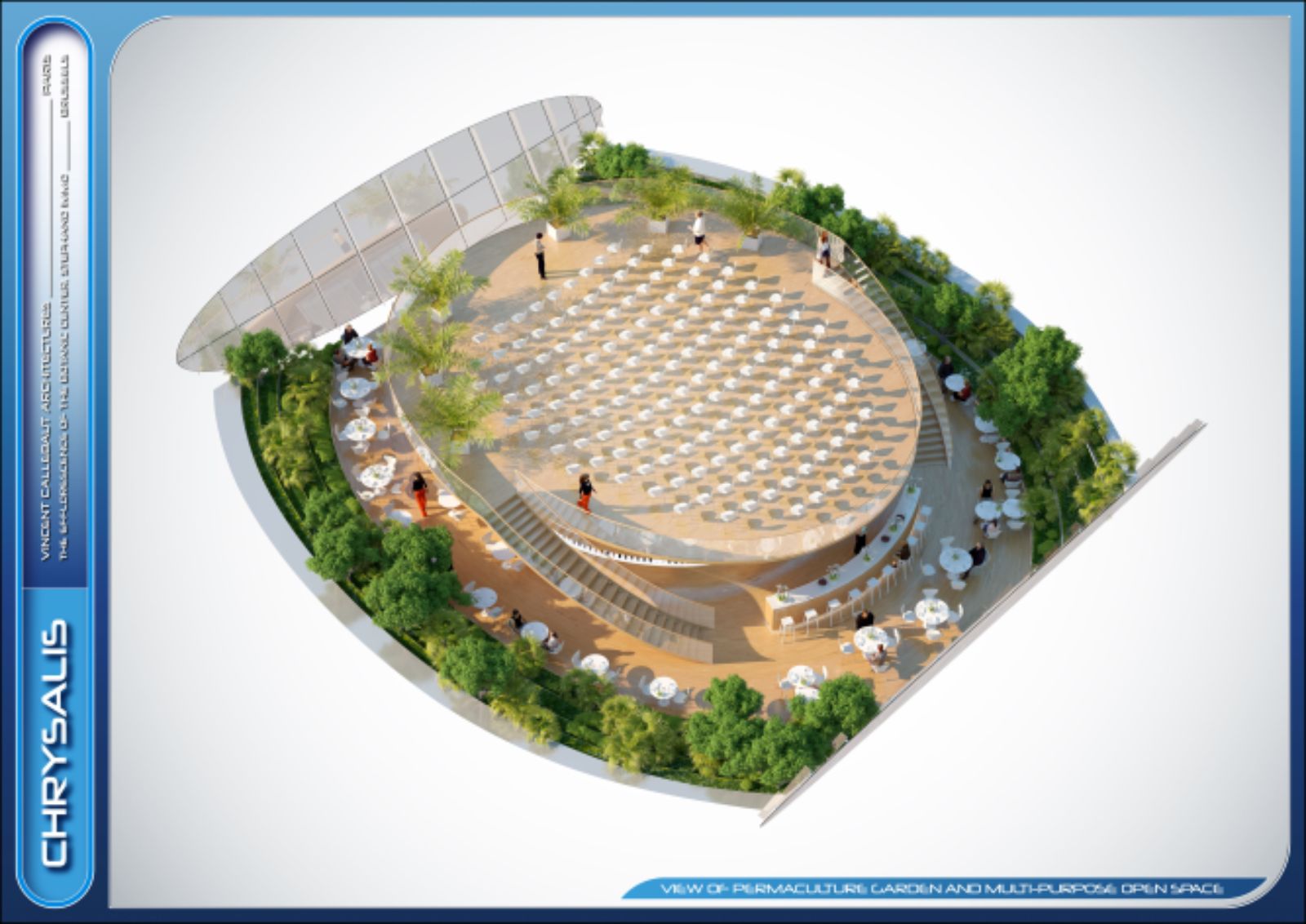
Preliminary Drawings
Built in 1977, the Botanic Center looks vertically unfinished today. With its 274 identical, ornamental concrete modules typical of the modern period, the façade doesn’t reflect the birth name of the building, related to the nearby Jardin Botanique (botanical garden). The proposed concept is to “bloom” the existing building, in the botanical, flowering sense of the word. Planter beds and a web of cables act as substrate, dressing the mineral façade with a vegetal envelope that regroups the entire range of the flora endemic to the Brussels area.

At the top of the building, a “Chrysalis” made of wood and steel deploys its curves to offer panoramic views to tenants and visitors, while echoing the large, Xaveer De Geyter-designed circular canopy that now covers the Place Rogier. The Chrysalis is carefully placed on the roof, aligning with the scale of the City 2 shopping mall. Its proactive (i.e., no longer inert) architecture embraces its era. On the ground floor, a contemporary façade and structural glass canopy reinforce the appeal of the public space by enhancing the indoor/outdoor interaction towards the Place Rogier, thus forming a homogenous, dynamic whole.
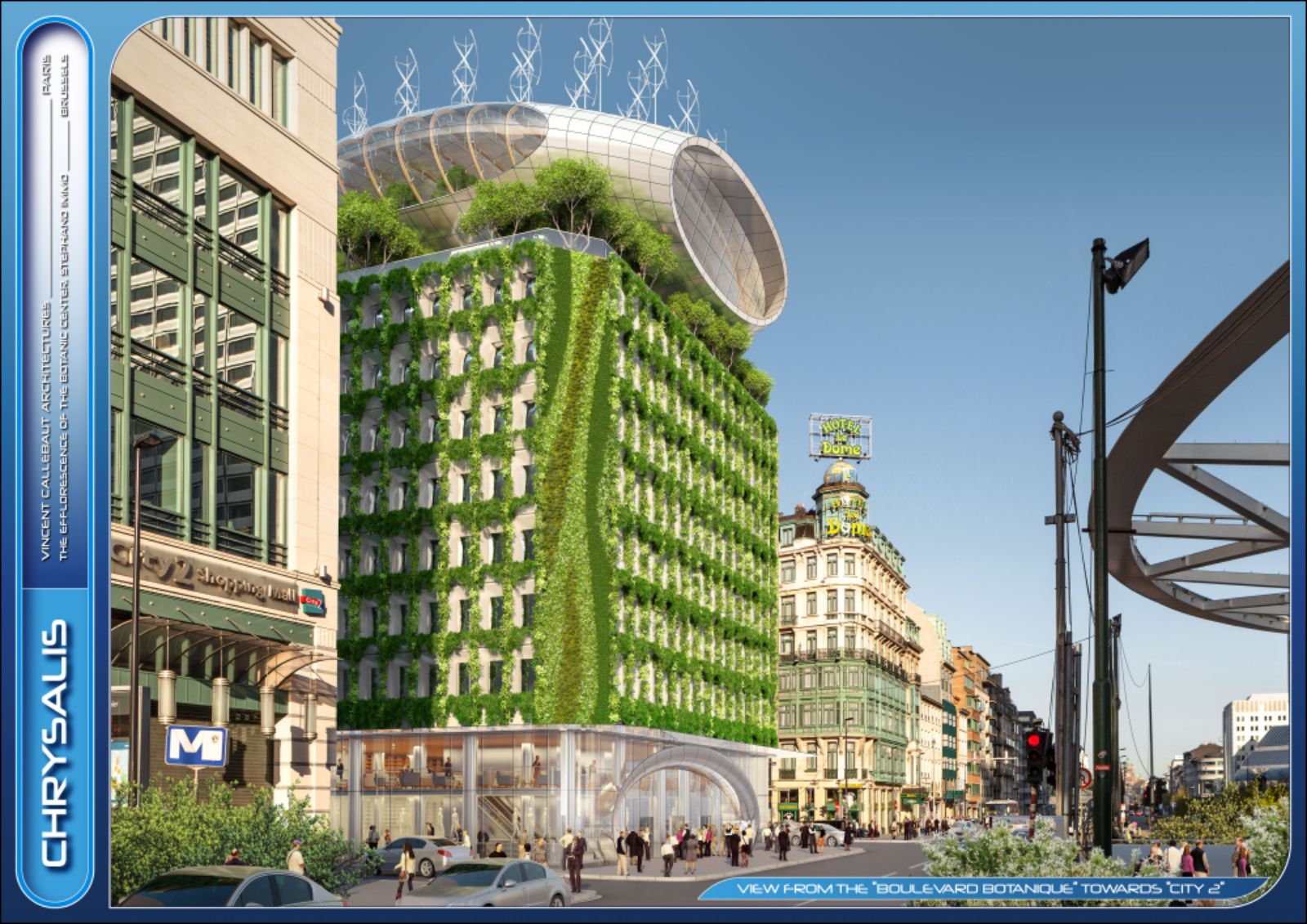
Urban Integration
Located strategically at the entrance of the Rue Neuve, and across from the City 2 shopping mall (the largest in Belgium) and the Belfius tower, the Botanic Center benefits from an exceptional urban location worthy of celebration. Given the project’s location in the heart of the highly mineral Boulevard Botanique, recommending an ecological landmark and vegetal architecture was an obvious choice — using photosynthesis to absorb the carbon particles contained in the urban smog, while integrating advanced renewable energies that address the project’s own needs.

Design Of The Carbon-Absorbing Façades
Our ambitions are as follows: to imagine a vegetal envelope on the three façades of the Botanic Center; to bring biodiversity back into the heart of the City; and with the help of botanists, to select plants that will color the building according to seasons. The 274 planter beds are directly integrated into the 274 existing modules of the façades. A drip system irrigates the beds. The photosynthesis of the 10,000 plants covering the façades and green roofs enable the capture of close to 50 tons of carbon dioxide in the Brussels atmosphere each year.

Design of The Photovoltaic Roof & Solar Farm
The high thermal energy shell of the titanium covered Chrysalis embraces the curves imposed by the urban setbacks along the Rue Neuve and Boulevard Adolphe Max. Its underside rests on the existing equipment rooms. Its top side is made of 12 gills that extend southwards to better capture sunlight, thus increasing the energy efficiency of the silicon panels covering them. The 600 m² (c. 6,460 square feet) solar shield helps generate more than 96,000 kWh/year (160 kWh/m²/year = c. 15 kWh per square foot per year). This energy production is supplemented by a 42-VAWT farm (vertical axis wind turbines). The annual output of those wind turbines is estimated at 770 kWh x 42 turbines = 32,340 kWh/year.

Structural & Functional Designs
The heightening of the Botanic Center requires a light, floating structure. The Chrysalis is subdivided into 15 arches made of glulam (glued laminated timber), pretensioned by a web of steel cables that limit its spatial and visual clutter. These 15 arches rest on a deck (underside of the curve) levitating above the equipment floor. The deck transfers the loads to the building’s carrier cores and existing columns. The two east and west tympana are made of curved glass echoing the nearby roof curves imposed by urban setbacks. The vertical façades of the 12 north-oriented gills bring natural ventilation to the new space. From a functional viewpoint, the Chrysalis is linked to the existing vertical circulations, with dedicated accesses located in the base of the mezzanine.
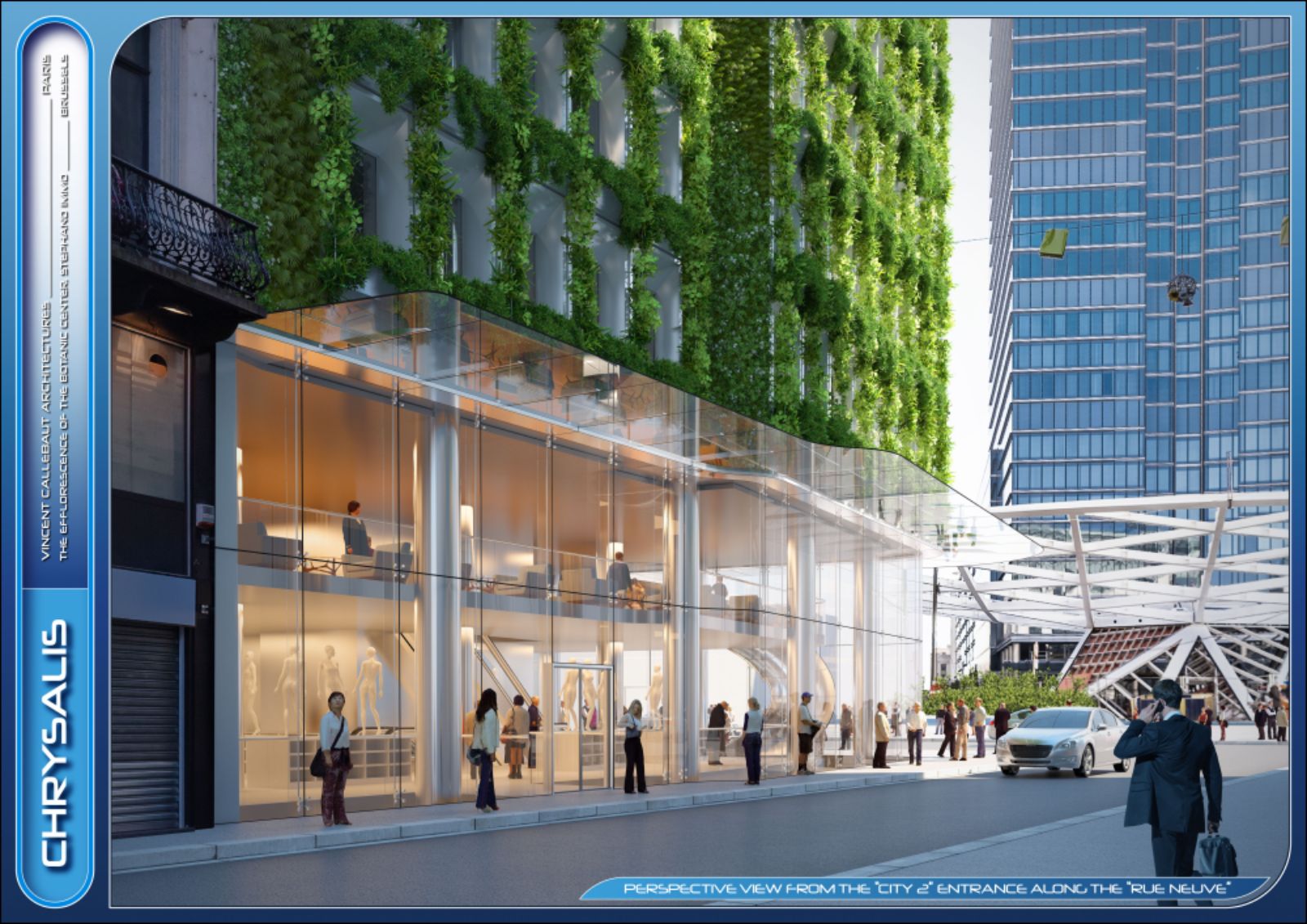
Design of Flexible Plan Types
The Chrysalis represents a great real estate opportunity, as it enhances the existing architectural heritage while bringing in renewable energies. With regard to the programming, it will be up to the contractor to complete the necessary market studies to enhance the value of a property that will become a new symbol in Belgium’s capital city — that of sustainable and environmentally responsible construction. The heightened structure could also become a location dedicated to events and culture, to training or coworking, or to urban agriculture with permaculture gardens.

Design of a Retail Store on the Ground Floor & Mezzanine
The architecture of the street-facing façades at ground and mezzanine levels is rethought to match the architecture of the heightened rooftop level. The challenge is to bring as much natural ventilation and daylight into the basement spaces. Along the Boulevard Adolphe Max, an elliptical arch similar to that of the Chrysalis clearly marks the main entrance to the Retail Store, while two escalator shafts attached to the central core provide access to its four levels. The more discreet side entrances are kept.
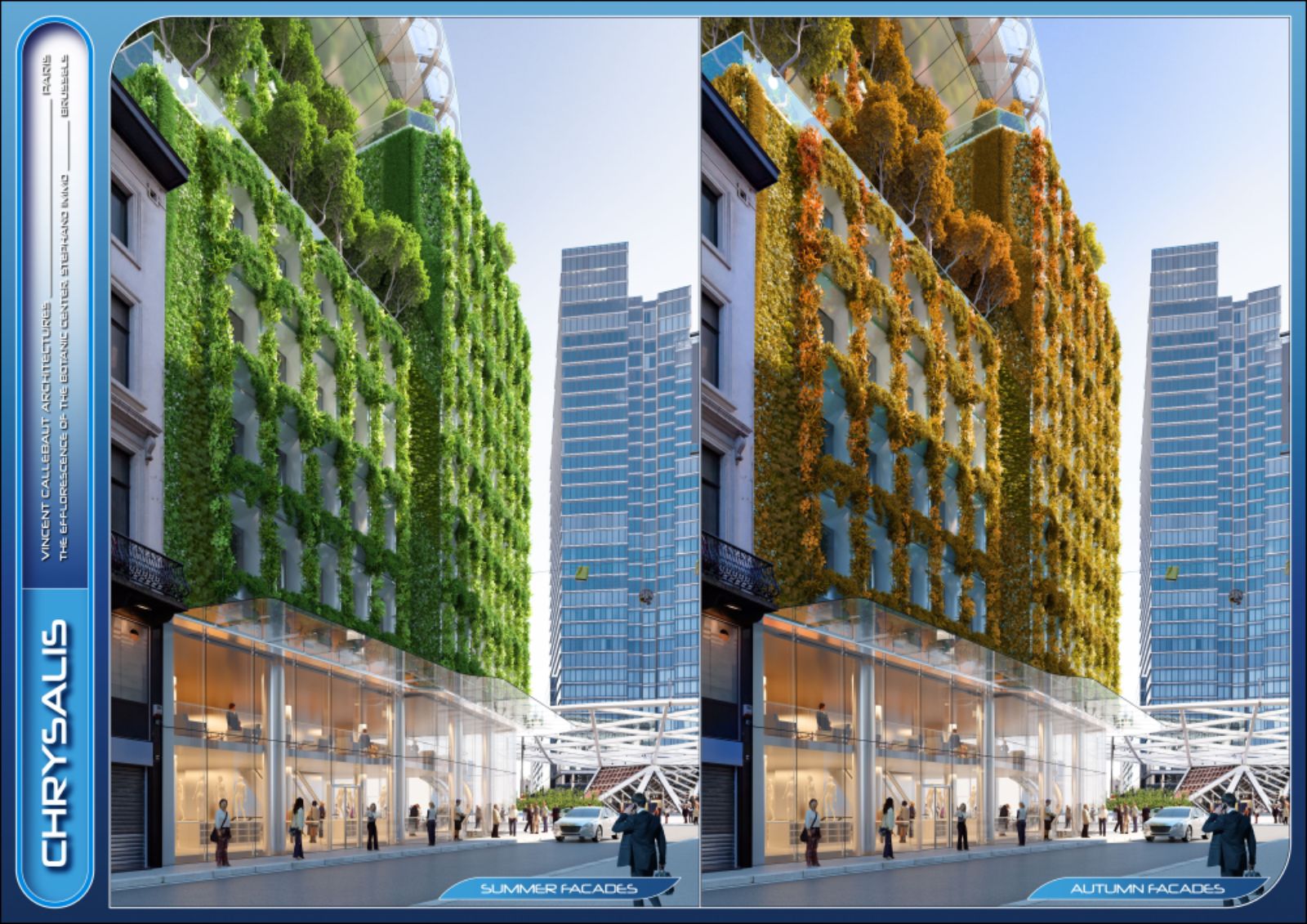
Design of the Interior Spaces
Designing an architecture that optimizes the quality of life and use is another duty, as the sustainability of a building is not solely energy-based. It is also based on spatial flexibility, on the use of biosourced materials that provide both quality and service in terms of comfort, performance and atmosphere, and on the reduction of nuisances and the generation of positive impacts. The purpose of the technical, structural and equipment “innervation” is to enable users to endlessly reconfigure their interiors. As discussed, technical components disappear within raised floors and double-partition walls, thus freeing space. With regard to the interior design and furniture layout, we also pay particular attention to the use of natural materials that are recycled and/or recyclable, warm and pleasant.

Ecological, “Landmark” Urban Renewal & “Nation Branding” Project
The architectural, technical, functional and landscaping choices reflect the integration of an environmental approach into our project. Such bold choices enabled us to design an “out of the box” architecture that will impact Brussels environmentally, while definitely projecting the Botanic Center into the 21st Century. Metamorphosis means transforming the caterpillar into a butterfly. Source and images Courtesy of Vincent Callebaut Architectures.

